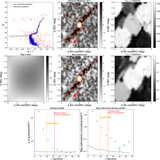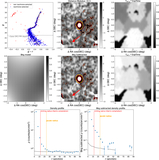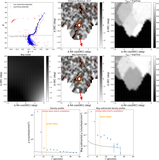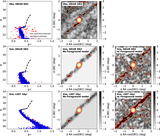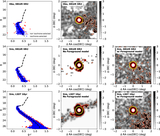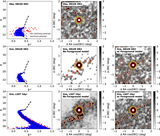Image Details

Caption: Figure 1.
The density of sky coverage, plotted in equatorial coordinates (R.A. and decl.), with the DECam camera and the location of 170 globular clusters (GCs) from E. Vasiliev & H. Baumgardt (2021) and the overlap with the DELVE footprint. The Dark Energy Survey (DES) covers the irregular polygon of higher star density in the lower center of the figure. The rest of the coverage is from the DELVE survey. GCs are denoted with a red cross, and those that had enough high-quality data that we could search for extratidal envelopes have a blue square around the cross. NGC 5897 (the GC with a newly detected envelope) and NGC 7492 (which has conflicting reports in the literature and for which we detect an envelope), are shown as cyan stars with coordinates ﹩(\alpha =229\mathop{.}\limits^{^\circ }35,\delta =-21\mathop{.}\limits^{^\circ }01)﹩ and ﹩(\alpha =347\mathop{.}\limits^{^\circ }11,\delta =-15\mathop{.}\limits^{^\circ }61)﹩, respectively.
Copyright and Terms & Conditions
© 2025. The Author(s). Published by the American Astronomical Society.


